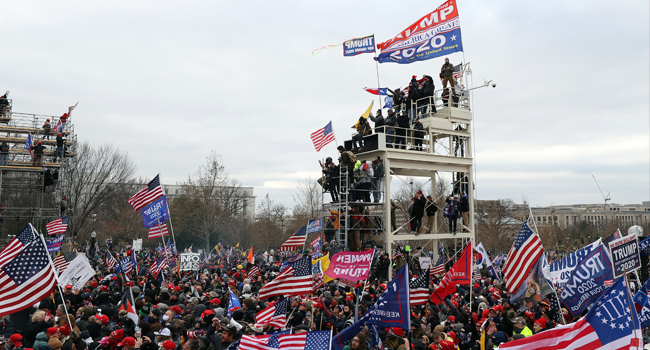- Biden rejected Trump’s efforts to shield Jan. 6, 2021 visitor logs under executive privilege.
- Biden ordered the National Archives to hand over the logs to the Jan. 6 panel within 15 days.
- His counsel said executive privilege should not be used to shield certain information.
President Joe Biden ordered the release of the White House visitor logs for January 6, 2021 — the day of the Capitol riot — despite former President Donald Trump’s claim that they should be shielded under executive privilege, multiple outlets reported on Wednesday.
The Biden White House ordered the National Archives to hand over the logs to the House Select Committee investigating January 6, according to The New York Times and Politico.
Biden’s White House counsel Dana Remus said in a letter to the National Archives that the records should be turned over to the committee within 15 days, rejecting Trump’s previous assertions that such records are protected under executive privilege.
Remus told the National Archives that “constitutional protections of executive privilege should not be used to shield, from Congress or the public, information that reflects a clear and apparent effort to subvert the Constitution itself.”
It’s unclear yet whether Trump will again go to court to try to halt the Biden White House from turning over the visitor logs.
The US Supreme Court last month rejected Trump’s bid to block some other White House documents and records from going to the January 6 committee, allowing the National Archives to turn over four pages of documents. It’s so far unclear what exactly the documents contain.
The Trump White House broke from previous administrations in not publicly releasing White House visitor logs, saying in 2017 that doing so would exacerbate “the grave national security risks and privacy concerns of the hundreds of thousands of visitors annually.”
The lack of publicly-disclosed visitor logs, The Times noted, left the public in the dark about which lobbyists and activists were coming and going from the White House. It’s also made it harder for the January 6 committee to reconstruct how the day of the insurrection, and the days leading up to it, unfolded within the White House.
The committee has previously heard “firsthand testimony” that Trump watched the riots on television from his private dining room off the Oval Office and rebuffed pleas from those immediately around him — including his daughter Ivanka — to do something to stop the siege on the Capitol, GOP Rep. Liz Cheney, the committee’s vice-chair, has said.
In addition to requesting White House visitor logs, the January 6 panel has subpoenaed testimony and phone records to fill in the missing pieces of who Trump communicated with during the riot in order to reconstruct the timeline of that day. The committee has also asked Ivanka Trump to voluntarily testify about her own recollections of that day, but it’s still unknown whether she will do so.
Several books on the final days of the Trump presidency reported that many of the president’s aides and advisors had left the White House entirely or had largely checked out by the end of his term.
The staff departures created a vacuum for figures like Trump’s then-lawyer Rudy Giuliani and other conspiracy-theory-wielding figures like the attorney Sidney Powell, legal scholar John Eastman, and former National Security Advisor Michael Flynn to try to convince him of quixotic ways that he could stay in power.
“Unfortunately, I think the president had some really, really bad advice,” Vice President Mike Pence’s ex-chief of staff Marc Short, who has voluntarily cooperated with the January 6 committee, told author David Drucker in 2021.
“The way the White House was structured at that point was that those people giving that really, really bad advice were given carte blanche access to the president, and I think there were no safeguards in the way the White House was being run at that point,” Short said.
Read the original article on Business Insider














